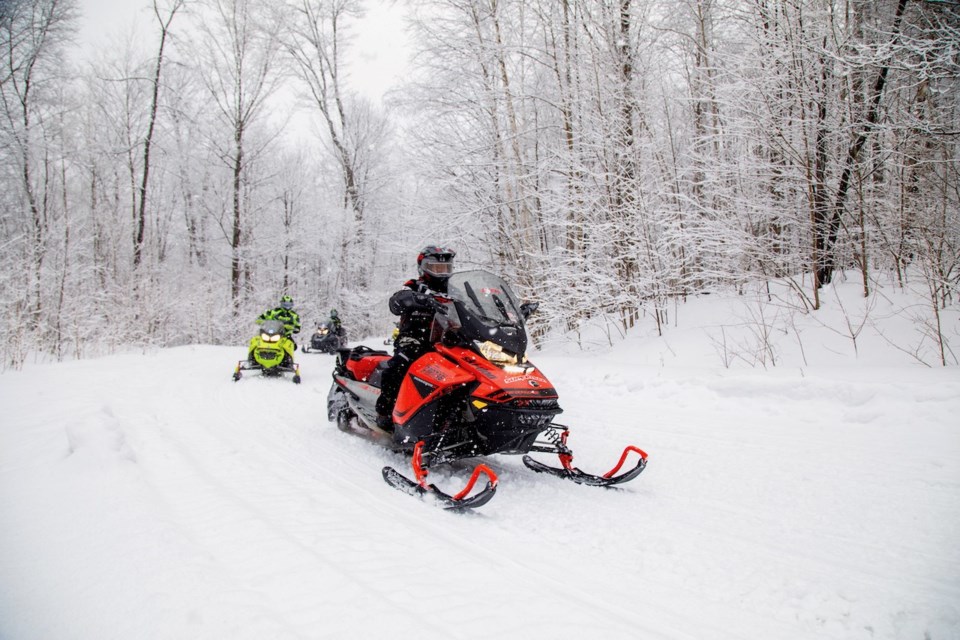After several years of hard work by the Timmins Snowmobile Club, snowmobiles are now permitted on many city streets. The project has not only made Timmins more snowmobile-friendly, but also has the potential to provide a significant boost to the city’s winter tourism economy.
“The goal was to allow snowmobilers to get from their homes to the trails, but also allow tourists to be able to get into town and utilize the various restaurants, hotels, and services that Timmins has to offer,” says Patrick Dzijacky, who has been president of the Timmins Snowmobile Club for the past three years. Dzijacky has been involved with the club since 2008, and has been a major advocate for making Timmins streets friendly to snowmobilers.
Snowmobiles were previously banned on all city streets, except those that are listed as part of the Ontario Federation of Snowmobile Clubs’ (OFSC) trail system.
Dzijacky says the club spent about five years in communication with city council and Timmins Police, working to roll out a plan that would give snowmobilers access to local streets in a three-phase approach. During the first phase in 2018-2019, streets in Gold Centre, Schumacher, South Porcupine, Porcupine, Mountjoy, and Connaught were opened to sledders. Phase two in 2019-2020 covered areas north and south of Algonquin Boulevard. The final phase was creating a city bylaw for snowmobile access to roads ahead of the 2020-21 season.
RELATED: Timmins is officially more snowmobile-friendly
The snowmobile club consulted the public throughout the process, addressing any issues as they arose and adjusting their plans for the project accordingly. Most neighbourhoods are now accessible to OFSC trails, with the exception being busier roads and areas surrounding schools. Many restaurants, hotels, and other businesses are also accessible.
“Obviously you do have lots of different opinions, and every year we work through concerns and complaints, but overall I think the public has been very receptive. The Timmins Snowmobile Club, Timmins Police, and City Council were very open to hearing feedback, positive or negative, but we really tried hard to address all the concerns,” Dzjacky says.
“We’re really looking for the public to not just criticize but bring to the table something that could make it work. Every year has gone better, I would say,” he says.
“We keep open lines to emails and we address concerns in a timely manner, and I think that was very well received, that we dealt with everything so quickly.”
The bylaw has not only been to the benefit of snowmobilers. A recent study by the OFSC found that snowmobile trails in the province may provide an economic boost of anywhere between $3 billion and $6 billion annually.
“Winter seems to be a slower time for a lot of resorts and businesses. Yes, you still have hockey tournaments and stuff like that but if you could introduce snowmobiling into the mix, obviously it’s another stream of revenue that everyone would be welcome to,” Dzijacky says.
According to the study, snowmobilers across the province collectively spent $1.48 billion on necessities like food, fuel, and overnight accommodations while sledding during the 2022-2023 winter season. More than 9,000 jobs in Ontario were supported by activities related to OFSC trails.
There have been anywhere between 1,000 and 1,900 permit holders in the Timmins area during any given season. Dzijacky hopes to see that number continue to grow and to see the local snowmobiling community flourish like it has in the past.
“Our goal would be to establish a new clubhouse on one of the main trails and really push that as a place for locals to hang out on the weekend, but also for the tourism side of things where there might be a large parking lot for people to leave their trailers, or a place that they could ride into Timmins to warm up for a bit, grab something to eat, and then keep riding through,” Dzijacky says.
Of course, such a big project is expensive, and much of the funds the club currently receives go toward essentials like grooming the trails. The club has recently started selling merchandise and has become more active on social media to draw more public attention, and is also actively looking for grants and sponsorship opportunities to make the clubhouse dream a reality.
In the meantime, the Timmins Snowmobile Club is always looking for volunteers to help brush and pack the trails and maintain signage.
“Our goal is to get to that point where it was in the past where you would go to the clubhouse on the weekend and you would see 50 or 60 riders out having a coffee. That’s where we’d like to get to again.”



